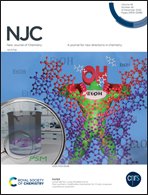Construction of high-performance triboelectric nanogenerators based on the microstructures of conical nanoneedles
Abstract
As a new energy-harvesting and signal-monitoring technology, triboelectric nanogenerators (TENGs) have received increasing attention. Research into the output performance is essential to promote the application of TENGs. Based on copper meshes with an in situ-grown conical nanoneedle (IGCN) structure on the surface, a poly(β-hydroxybutyrate) (PHB) membrane was hot embossed to construct a microstructure. Then, the effects of the copper mesh hot-embossing on the microstructures, hydrophilic and hydrophobic properties, and the mechanical properties of the PHB membrane were investigated. A TENG was made by a hot-embossed PHB membrane and expanded polytetrafluoroethylene (ePTFE), and the influence of the microstructures on the triboelectric properties was explored. The results showed that the surface roughness of the PHB membrane was significantly increased by the hot embossing, and the roughness increased with the increase in the copper mesh size. Compared with the smooth copper mesh hot-embossing, the roughness of the PHB membrane hot embossed with IGCN was increased more obviously. The introduction of IGCN could significantly improve the output performance of TENG. Compared with using the original PHB membrane, the open-circuit voltage, short-circuit current density, and short-circuit transferred charge density of the TENG using the PHB membrane hot-embossed with copper mesh with a 500 mesh number with nanoneedles were increased by 86.6%, 54.8%, and 96.7%, respectively, which provides a new method to improve the output performance of TENGs.



 Please wait while we load your content...
Please wait while we load your content...